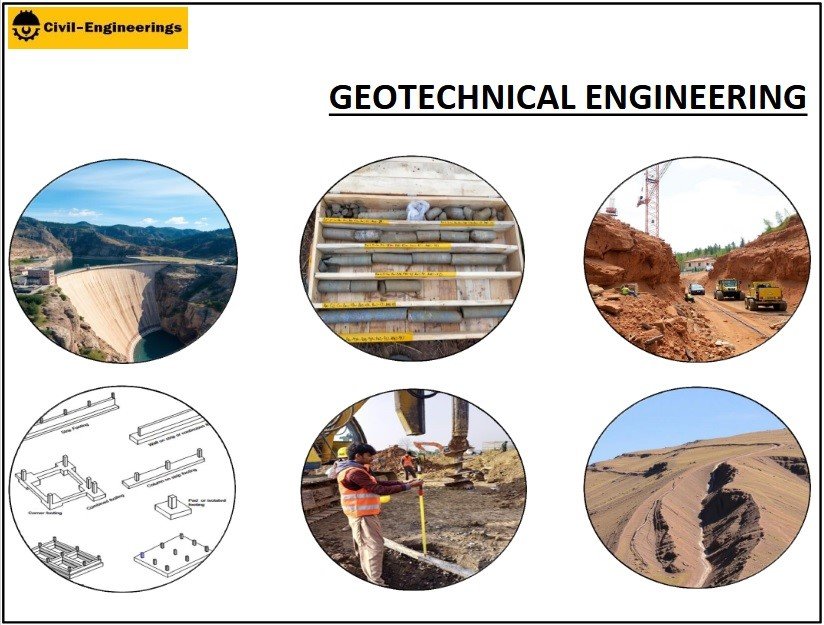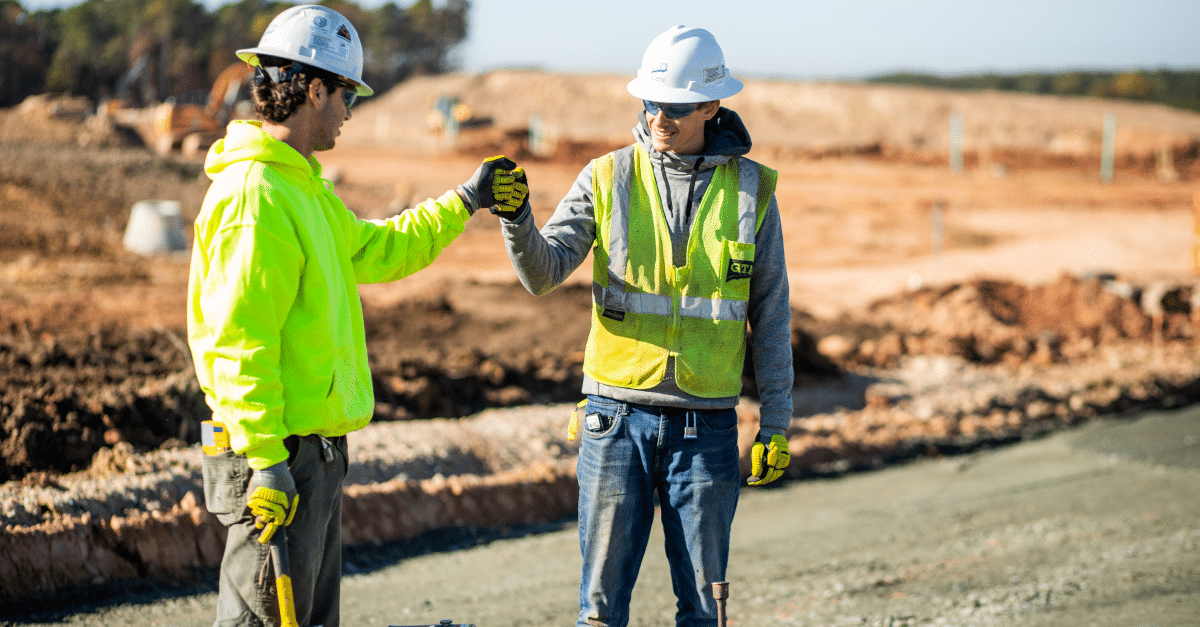Geotechnical Engineering For Construction Projects - Questions
Some Of Geotechnical Engineering For Construction Projects
Table of ContentsWhat Does Geotechnical Engineering For Construction Projects Do?Everything about Geotechnical Engineering For Construction ProjectsThe Only Guide for Geotechnical Engineering For Construction ProjectsAbout Geotechnical Engineering For Construction ProjectsOur Geotechnical Engineering For Construction Projects IdeasThe Buzz on Geotechnical Engineering For Construction ProjectsA Biased View of Geotechnical Engineering For Construction Projects
and Kovacs, W. (1981 ), An Intro to Geotechnical Design, Prentice-Hall, Inc. Deep Check Tech (2023 ): Deep Check Tech reveals covert frameworks at the website of Denmark's tallest structure. "Geofrost Coring". GEOFROST. Gotten 20 November 2020. Han, Jie (2015 ). Concepts and Method of Ground Improvement. Wiley. ISBN 9781118421307. RAJU, V. R.Ground Improvement Technologies and Case Histories. Singapore: Research Publishing Services. p. 809. ISBN978-981-08-3124-0. Ground Improvement Concepts And Applications In Asia. Pariseau, William G. (2011 ). Style evaluation in rock mechanics. CRC Press. Hegde, A.M. and Palsule P (Geotechnical Engineering for Construction Projects).S. (2020 ), Efficiency of Geosynthetics Reinforced Subgrade Subjected to Repeated Automobile Plenties: Speculative and Mathematical Researches.
Cengage Discovering, Stamford, 666 p. Atkinson, J., 2007. The technicians of dirts and foundations. Taylor & Francis, N.Y., 442 p. Drifting Offshore Wind Turbines: Feedbacks in a Sea state Pareto Optimum Layouts and Economic Analysis, P. Sclavounos et al., October 2007. Nicholson, D, Tse, C and Cent, C. (1999 ). The Observational Technique in ground engineering concepts and applications.
The Best Strategy To Use For Geotechnical Engineering For Construction Projects
Laboratory and area screening plays a critical duty in this process. By drawing out samples from the earth's subsurface and using a collection of tests, geotechnical engineers can predict the practices of soil layers and evaluate their viability for various building and construction efforts. The essence of geotechnical engineering in civil engineering can not be overemphasized, attributable to several variables: The first action in any geotechnical research study involves figuring out the soil type at the building and construction site.
The foundation acts as the bedrock of any kind of construction job. Selecting the proper foundation kind is a decision that hinges on the comprehensive evaluation given by geotechnical design.

Geotechnical site examination is a crucial action in the preparation and implementation of any type of building and construction job. It entails the collection and analysis of data connected to the physical properties of soil and rock underneath a suggested building and construction site. This details is important for the design and building and construction of risk-free, stable, and sustainable structures.
The Single Strategy To Use For Geotechnical Engineering For Construction Projects
In this blog, we will certainly explore the relevance of geotechnical site examination, its various components, and how it benefits construction jobs. Geotechnical site investigation, additionally called subsurface expedition, includes a collection of activities aimed at identifying the soil, rock, and groundwater problems at a construction site. The main purposes are to determine prospective geotechnical threats, assess the design residential or commercial properties of subsurface products, and offer referrals for the design and building and construction of structures, preserving walls, and other frameworks.
The desk research study assists in recognizing prospective geotechnical concerns and planning the succeeding fieldwork. This involves observing the topography, water drainage patterns, existing structures, greenery, and any type of indicators here are the findings of instability or erosion.
The Best Guide To Geotechnical Engineering For Construction Projects
Superficial test pits are dug deep into to directly observe and sample the dirt and rock. This technique is helpful for researching the upper layers of the subsurface and recognizing near-surface hazards. Non-invasive geophysical approaches, such as seismic refraction, ground-penetrating radar (GPR), and electric resistivity tomography (ERT), are made use of to map subsurface conditions and find anomalies.
Dirt and rock examples accumulated during the area investigation are subjected to laboratory screening to establish their physical and mechanical residential properties. These tests provide necessary data for geotechnical analysis and design.
The main benefit of geotechnical website investigation is guaranteeing the safety and stability of frameworks. By understanding the subsurface problems, engineers can design foundations and other structural aspects that can stand up to the tons and environmental forces they will certainly go through. This minimizes the threat of settlement, subsidence, and architectural failing.
Some Of Geotechnical Engineering For Construction Projects
Recognizing dirt attributes can assist the selection of excavation methods, dewatering methods, and ground enhancement steps. This makes sure efficient and risk-free building and construction methods. Geotechnical site examinations are typically needed by developing codes and laws. Complying with these requirements makes certain conformity with legal and safety standards, staying clear of possible lawful obligations and job hold-ups.
This info is indispensable for project supervisors, engineers, and service providers in developing sensible schedules, budget plans, and backup plans. Geotechnical Engineering for Construction Projects. Skyscraper in a Coastal AreaIn a seaside city, a high-rise residential building was prepared on a site with believed loosened sand down payments and a high water table. A detailed geotechnical examination, including borehole exploration, CPT, and geophysical surveys, was carried out
Some Known Incorrect Statements About Geotechnical Engineering For Construction Projects
Based upon these searchings for, the structure design was changed to consist of deep heap foundations prolonging into steady strata, and ground renovation methods, such as vibro-compaction, were executed to mitigate liquefaction dangers. This proactive approach made sure the security and stability of the building while avoiding expensive post-construction remediation. Infrastructure Advancement on a Sloping TerrainA significant framework job, entailing the construction of a highway and bridges, was prepared on an uneven terrain with high inclines.

The Leaning Tower of click here to read Pisa (Italy), a legendary building wonder, is well known for its unexpected tilt from considerable geotechnical concerns. The tower's structure was inadequately created to take care of the soft, unstable dirt underneath it, causing irregular settlement and its unique try these out lean. Our world is populated with excellent facilities projectsfrom looming high-rise buildings to sprawling bridgesall standing testament to the development of the various construction devices and methods offered.
Geotechnical engineering is a specialized field within civil engineering that concentrates on studying the habits of earth materials. This branch digs deep right into the groundinvestigating how the dirt, rock, and groundwater at a building website can influenceand be influenced bythe infrastructure that we set up on and right into them. Prior to a single block is laid or a concrete structure poured, geotechnical designers probe into the earthgathering critical information about the site's soil composition, rock structure, and groundwater degrees.
The Geotechnical Engineering For Construction Projects Statements

is a device used to assess the integrity and load-bearing ability of piles during installation, leveraging the principle of wave proliferation. It maximizes building efficiency by supplying real-time evaluations, thus guaranteeing risk-free and reliable stack structures. Among the useful applications of geotechnical engineering includes choosing and carrying out the best methods for foundation building.
Load driving represents more than the simple act of putting architectural elements into the ground. On the contrary, it is a very carefully orchestrated procedure of moving a framework's tons past the less stable soil layers closer to the surfacedown to the much more significant strata that exist beneath. When it comes to stack driving, think about exactly how geotechnical engineers expertly utilize this strategy to evenly disperse the framework's weight.